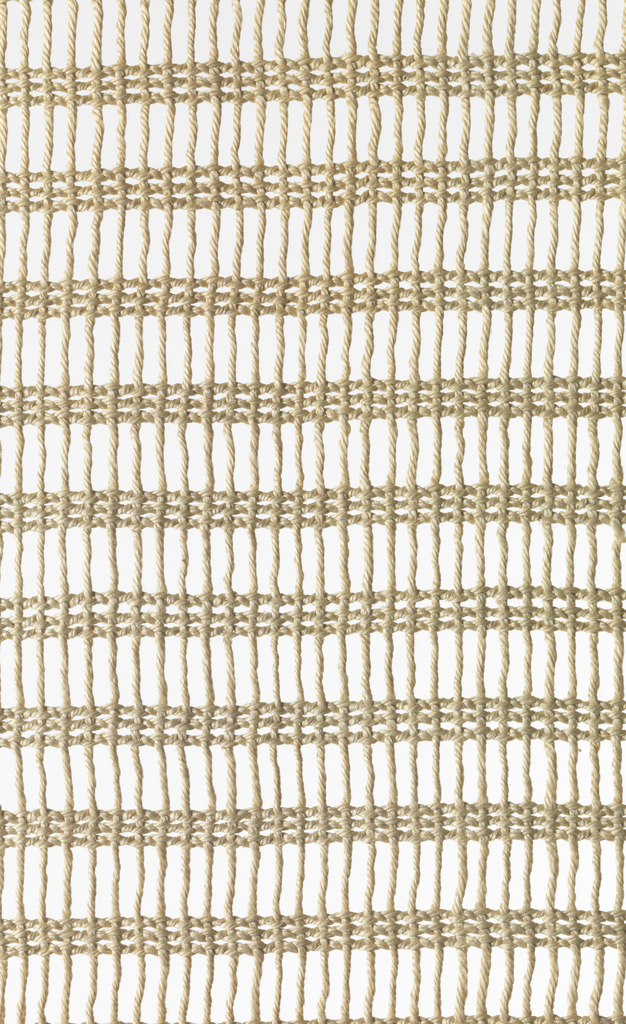As glass-walled office buildings proliferated in the mid-1950s, Knoll’s collection of casement fabrics, as a category distinct from draperies, expanded rapidly. Casements are defined as open-weave or sheer fabrics which filter light without blocking it. Fishnet and Minnow were early experiments, both being literal translations of simple net structures. In 1955 most of the casements in the line were simple plain-woven sheers, but later in the decade Knoll began to commission designers to create casements with bolder textures and more structural interest. Anni Albers, who had long been concerned with the functional role of textiles in modern architecture, agreed to create designs on a royalty basis. Knoll introduced three linen gauze-weave casements by Albers: Lattice (1959), Rail (1962) and Track (1965). Rail was the boldest of the three, with wide open spaces broken by closely grouped twisted warps. It remained in the line until at least 1978 in the US, and 1982 in Europe.
Tombstone
Textile, "Rail", introduced 1962. Anni Albers. Gift of Richard and Trudy Schultz. 2011-25-1.
Collection Record
